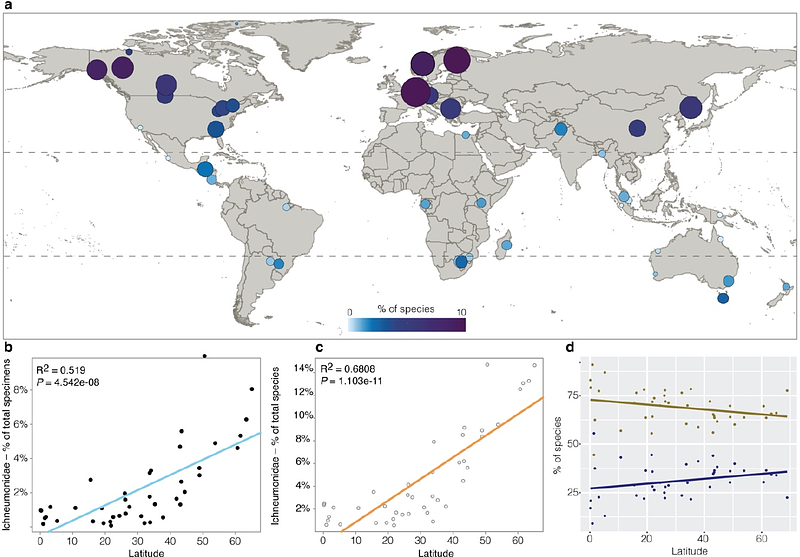Weak and inverse latitudinal diversity gradients in the 10 most abundant and diverse flying insect clades

Weak and inverse latitudinal diversity gradients in the 10 most abundant and diverse flying insect clades
Santos, B. F.; Srivathsan, A.; Neves, K.; Meier, R.
AbstractThe diversity of many well-studied taxa increases toward the tropics, but the available data are biased toward organisms larger than 5 mm, excluding most multicellular species. To address this bias, we analyzed DNA barcode data for 1.35 million specimens of flying insects, representing over 130,000 putative species collected using 101 Malaise traps in 27 countries across six continents. We find that the same ten insect families, consisting mostly of small species, dominate the abundance and diversity, accounting for over half the species across climates, habitats, and sites. Surprisingly, five of the ten have non-significant or even an inverse latitudinal diversity gradient, while the remaining five exhibit only weak to average gradients compared to 470 other terrestrial taxa. Three of the top-ten taxa are parasitoid families, but only one, ichneumonid wasps, display a strong inverse gradient, thus indicating that parasitoidism alone cannot explain this unusual gradient. Subfamily-level analysis for Ichneumonidae further suggests that host specialization is also unlikely to be the main driver. Our study reveals surprising global convergence in insect community composition alongside unexpected variation in latitudinal diversity gradients. As taxonomic and body size biases are addressed, more such surprises are likely, reshaping our understanding of global biodiversity patterns.